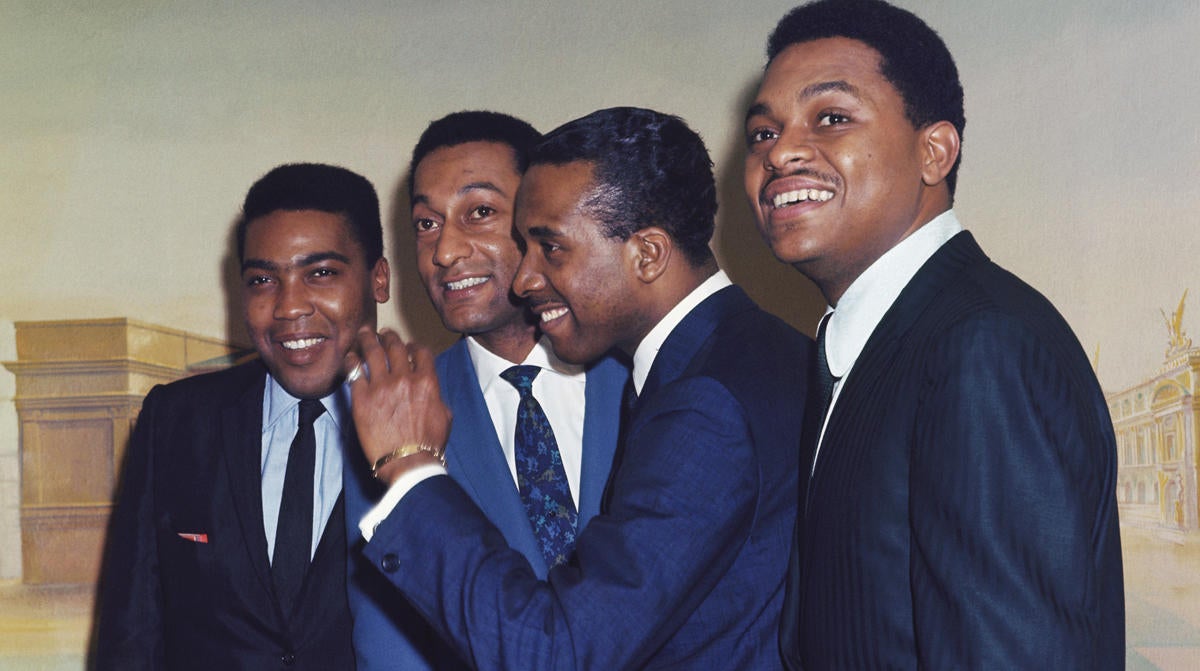The Shocking True Story Behind HBO Max’s Love & Death
The American suburb, with its neatly mown lawns and white picket fences, has long been used in pop culture as a facade of normalcy, concealing chaos and violence. This suspicion of the suburbs was fueled in part by books like Richard Yates’ Revolutionary Road, but also by real life cases—most notably the serial killer John Wayne Gacy, a cheery suburban businessman who murdered more than 30 people in the 1970s. And around the same time, in the small town of Wylie, TX, came the case of Candy Montgomery, whose savage crime is the subject of HBO Max’s new series Love & Death. Here’s a primer on the key facts to know.
Candy Montgomery was a law-abiding, church-going housewife before she met the Gores.
In 1977, when Candy was 28, she and her husband Pat Montgomery moved to Wylie, TX, a picturesque suburb about 30 miles northeast of Dallas. There, the center of their social world was the local methodist church, where Candy and Pat befriended a local couple named Betty and Allan Gore.
Betty and Allan’s marriage was on the rocks; Allan traveled a lot for work, leaving Betty alone for days at a time, and her own job as an elementary school teacher often left her exhausted. Meanwhile, Candy was growing bored of her life with Pat, and had started talking openly with friends about the possibility of having an affair. Per Texas Monthly, “She was explicit about the kind of affair she was interested in: transcendent sex. As she put it, ‘I want fireworks.’”
Candy and Allan were both more outgoing than their spouses, and were involved in church activities and local sports teams. They began spending more and more time together, and by the summer of 1978, they’d developed an intense flirtation. But instead of falling passionately into an affair, the pair spent months cautiously discussing the possibility. Eventually, they both agreed that their mutual attraction was too strong to deny, but that they could only go through with it on a few conditions: Their spouses could never find out, and they had to promise each other that they wouldn’t get emotionally attached. This excerpt from Texas Monthly gives a pretty good sense of the tone:
The next month consisted of strategy sessions for what must have been the most meticulously planned love affair in the history of romance. It began with tentative phone calls from Allan, asking about this or that. “When would we do it?” “What if somebody saw us?”
But finally, by the end of 1978, Candy and Allan began their affair.
Despite all their planning, Allan and Candy’s affair still ended as messily as most do.
Candy and Allan were seeing each other in secret for several months, until the spring of 1979. They developed a routine: They’d meet up during Allan’s lunch hour, always in the same sparse motel room, have sex, and talk endlessly. For a while, it felt revitalizing for them both. But soon, Candy began to worry that she was breaking their promise–she was getting emotionally attached. In fact, their relationship began to feel more like an emotional affair than a sexual one, which seemed more dangerous. Per Texas Monthly:
In retrospect, she would see that it had been inevitable. Sex or no sex, she and Allan had both come to look forward to their daily conversations, their shared confidences, their joint dependence… As time went on they seemed less like lovers and more like best friends. During one rendezvous, they decided to forgo sex altogether because they wanted to spend lunchtime talking. Candy could even talk to Allan about Pat; he was that understanding.
For a while, Pat was the one who had to talk Candy into carrying on. But soon, he began having his own misgivings. Betty was now pregnant with his child, and seemed to be getting suspicious about how checked out he was from their marriage. That summer, after Betty gave birth, she and Allan began attending Marriage Encounter, which today bills itself as a “faith-based marriage enrichment program helping husbands & wives improve their communication.” Thanks to the program, he realized that he wanted to make a real go of things with Betty, which meant dedicating more time and energy to their marriage.
That summer, he broke off his affair with Candy, leaving her devastated.
A year later, Candy killed Betty with an ax.
On June 13, 1980, Candy went over to Betty’s house to borrow a swimsuit. But unbeknownst to her, Betty had been stewing on her suspicions for a long time—and out of the blue, she confronted her, asking Candy if she was having an affair with Allan. She initially denied it, and then confessed.
At that point, according to the version of events that was presented at trial, Betty left the room, and reappeared holding an ax. As Candy tried to apologize to her for the affair, Betty swung at her with the ax, screaming: “You can’t have him. I’m going to have a baby, and you can’t have him this time.”
A vicious fight ensued, and ultimately Candy wrestled the ax away from Betty. She raised it over her head, and brought it down again and again on Betty, chopping into her more than 40 times. When she finally stopped, it was only because she was too physically exhausted to carry on. But moments later, as she came back to her senses, she was horrified by what she’d done and fled the house.
Allan, who was away on a business trip at the time, soon became concerned that Betty wasn’t answering the phone. Authorities found her mutilated body lying on the utility room of her house, with her infant daughter just yards away in a crib. The scene was so grisly that for a while, detectives suspected that the killing was inspired by Stanley Kubrick’s The Shining, which had just been released in the U.S. a month prior, and depicts Jack Nicholson’s Jack Torrance attempting to murder his wife and son with an ax. “It looked like a scene from a horror film,” former Collin County sheriff’s deputy Steve Deffibaugh told People. “It was a Friday the 13th. Our thought was that we had a copycat of The Shining.”
Candy was acquitted of Betty’s murder in a controversial trial.
As the last person to see Betty alive, Candy soon became the lead suspect in her murder. But though the police questioned her several times, they couldn’t find any holes in her story, nor any motive for the crime—until, that is, Allan admitted that he’d recently ended an affair with Candy. At that point, the cops arrested Candy and charged her with Betty’s murder.
When the trial began in October of 1980, Candy confessed that she had killed Betty, but claimed that she’d done so in self-defense. She told the version of events which is outlined above (and described in thorough detail in the second half of Texas Monthly’s coverage).
The defense quickly pointed to the fact that Betty had been sliced 41 times with the ax, which far exceeded the necessary force Candy should have used in self-defense (in forensic psychology, this is known as overkill). But Candy claimed that she had been experiencing a kind of dissociative state as the result of childhood trauma. She said that Betty had shushed her, which triggered a memory of her abusive mother that sent her into a violent rage. It was a hypnotist, hired by Candy’s defense team, who uncovered this repressed memory.
This defense ultimately swayed the jury, and after an eight-day trial, they voted to acquit Candy of Betty’s murder. This ruling proved unsurprisingly controversial, and protestors lined the streets surrounding the courtroom as Candy departed on October 30, 1980. She told reporters at the time that all she wanted to do was “get all this behind me and be normal again.”
Where is Candy now?
She seems to have achieved her wishes of normalcy. Candy and Pat stayed together after the trial, and moved out of Texas to escape the lingering spotlight, though some reports indicate that they subsequently got divorced. Today, per People, Candy is living in Georgia, where she works as a mental health counselor.

Emma Dibdin is a freelance writer based in Los Angeles who writes about culture, mental health, and true crime. She loves owls, hates cilantro, and can find the queer subtext in literally anything.






